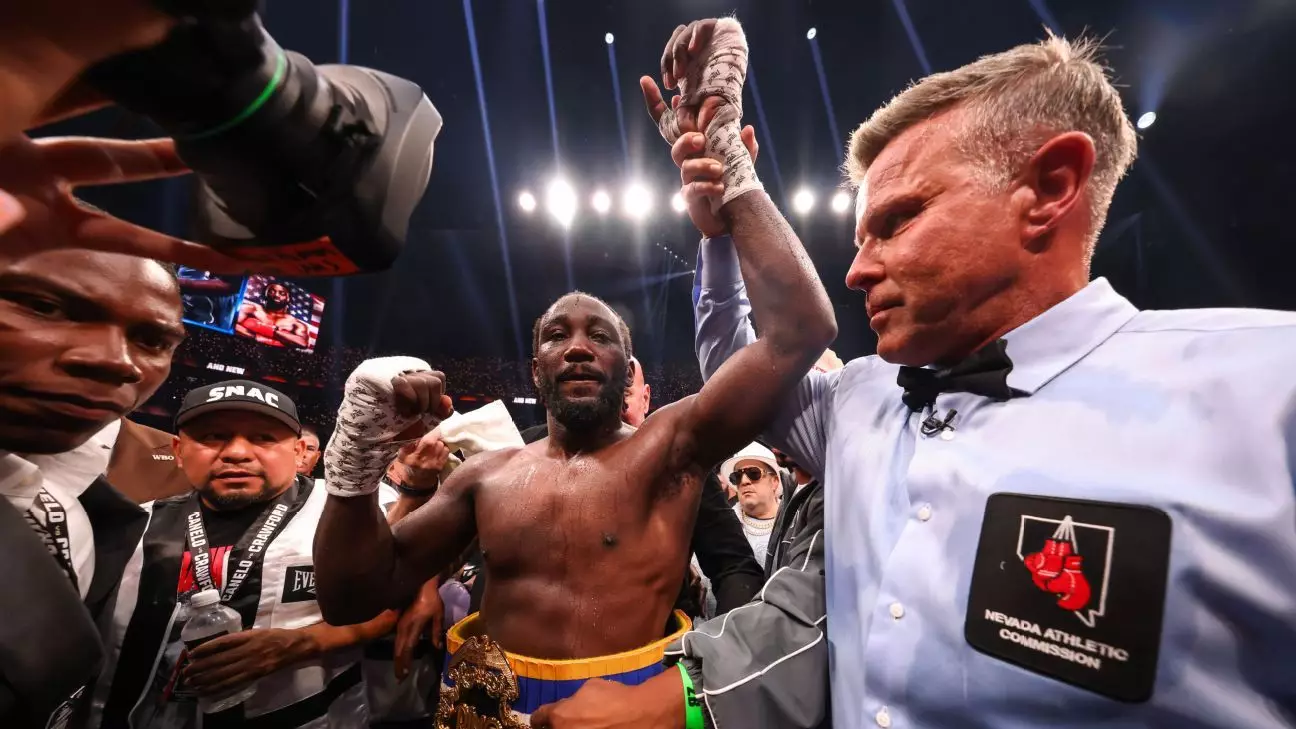In the wake of Terence Crawford’s stunning surge to undisputed status in the boxing world, the sport is witnessing an unusual but intriguing phenomenon: a rising UFC champion openly aiming to crossover into boxing and challenge the reigning king. Ilia Topuria, an undefeated lightweight sensation, has thrown his hat into the ring, claiming he could outfight Crawford and even knocking him out. This spectacle isn’t merely about sport; it’s a dance of ego, bravado, and the thirst for validation. Topuria’s audacious social media taunt and his walking out to a famous Mariachi tune during a UFC event have amplified the hype, transforming this into a narrative that extends beyond the ring.
However, the core issue isn’t how flamboyantly Topuria is trying to garner attention; it’s the fundamental misunderstanding and underestimation of what it takes to move from MMA into professional boxing. His bravado might sound entertaining on social platforms, but it masks a profound ignorance of the nuances distinguishing the two disciplines. Boxing is a sport built on precision, timing, footwork, and a grueling technical foundation, none of which, judging by his comments and actions, Topuria seemingly comprehends fully. His bravado, while attention-grabbing, reveals a superficial grasp of the combat sport hierarchy and player respect.
Questions of Legitimacy and Intent
Crawford’s dismissive comments about Topuria—calling him a “clout chaser” and “not on the level” of a legend like Conor McGregor—highlight a critical point. The fight they are discussing is not comparable to the Mayweather-McGregor spectacle, which was meticulously crafted as a crossover event blending entertainment and combat sports. Crawford’s skepticism towards the UFC champion’s genuine intent underscores a broader truth: crossover fights, especially involving great boxers and MMA fighters, are often fueled more by financial motivations than sporting merit.
Furthermore, Crawford’s genuine confusion about Topuria’s sudden vocal push for a fight reveals a disconnect. The UFC star only recently started publicly declaring his desire, despite having minimal combat sports experience in boxing. If Topuria truly believed he could test his skills against a three-division undisputed champion, why was there no direct communication or interest from either side earlier? It seems more like a case of opportunistic bravado rather than a well-supported challenge rooted in mutual respect or serious intent.
Dissecting the Illusion of ‘Genuine’ Competition
A crucial flaw in Topuria’s narrative is the sniper-like expectation that an MMA fighter, no matter how talented, can step into boxing and immediately replicate the success that Floyd Mayweather or Conor McGregor achieved. Those bouts, particularly McGregor’s, were heavily marketed spectacle events that relied heavily on celebrity appeal, effective promotion, and the uniqueness of the crossover concept. They were not pure athletic contests in the traditional sense but entertainment spectacles, with Mayweather’s technical mastery often overshadowing McGregor’s MMA boxing skills.
Topuria’s bravado, claiming he’d “teach Crawford how to dance in the ring,” illustrates a fundamental ignorance of the pure boxing technicalities and the mental toughness required. It’s not merely about heavy hands; it’s about years of disciplined training, defensive mastery, ring intelligence, and resilience. To dismiss Crawford’s skills as a mere matter of fists and assume you can just ‘knock him out’ demonstrates either arrogance or a naive underestimation of boxing’s complexities.
The Reality Check: Why Genuine Competition Is Rare
Honestly, the idea that UFC fighters can easily transition into boxing and challenge reigning champions is largely a fantasy rooted in the allure of cross-promotion. While the financial gains are tempting for fighters from both sports, the competitive integrity often suffers. Crawford’s skepticism reflects his understanding of this danger—fighters from different sports don’t share equivalent skills, conditioning, or strategic understanding, and fighting outside your domain is a recipe for disappointment.
The broader problem lies in the mythos of crossover fights: they often function more as marketing stunts than genuine athletic competitions. For fighters like Crawford, the risks outweigh the benefits unless the match is revered as a marquee event capable of drawing massive attention and revenue. For Topuria, the challenge might be more about his ego and desire for recognition than any realistic pursuit of true sport respect and achievement.
In essence, the crossover landscape is fraught with false hopes. Even among the most skilled MMA fighters who have dipped toes into boxing—like McGregor or even Demetrious Johnson—the transition has been riddled with struggles and compromises. The leap into boxing’s elite echelon requires far more than bravado; it demands mastery cultivated over years, not social media trash talk or walkout anthems.
Crawford’s dismissive attitude isn’t just about smacking down a pretender; it’s an invocation for fighters and fans to recognize the difference between spectacle and genuine sport. While the allure of a crossover fight might make headlines temporarily, true respect for combat sports comes from acknowledging and appreciating the immense skill and dedication that each discipline demands. Until then, episodes like Topuria’s audacious challenge serve as a reminder that hype often outpaces reality.

